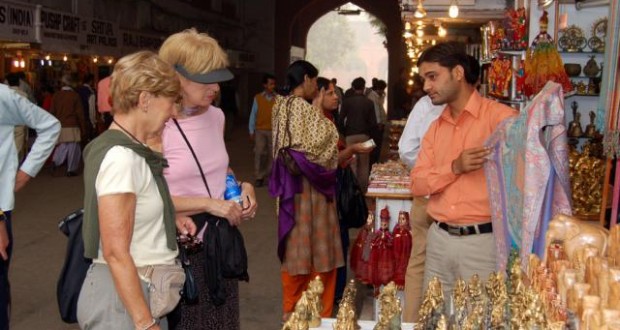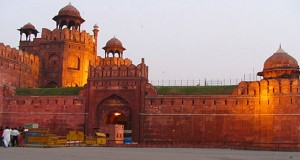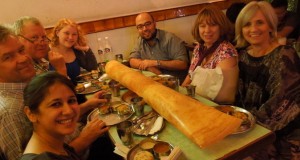Review Overview
3
Summary : Delhi has more sights than any other Indian city, so you'll need to be selective.
WHAT TO SEE Delhi has more sights than any other Indian city, so you’ll need to be selective. As a new arrival, your best bet is probably to take a full-day or two half-day conducted tours. Delhi’s tours aren’t the best—far too much time is wasted on picking up passengers before hitting the sights—but at least you cover a lot of out-of-the-way spots which would cost much more time and money to see by taxi, rickshaw or car. And you can always return to spend more time at places you particularly like. One tip: before taking on a tour, give yourself a day or two to get over jet-lag. Like all major Indian cities, Delhi can be pretty overpowering and during the summer incredibly hot.
City Tour (conducted sightseeing coach, 4 hours) Jantar Mantar-Laxmi Narayan Temple-Rashtrapati Bhavan- India Gate-Safdarjang Tomb-Qutb Minar-Humayun’s Tomb Leaving Connaught Place down Parliament St, you’ll first see the salmon-pink astronomical observatory of Jantar Mantar. Built in AD 1724, this was the first of five brick-and-mortar observatories created by the starstruck Maharajah Jai Singh II of Jaipur. It consists of four differing masonry instruments designed to predict eclipses and to plot the course of the planets, stars and sun. The big feature is the huge ‘Prince of Dials’ sundial. But Delhi city-dwellers come here mainly for picnics on the pleasant garden lawns. Open sunrise to 10 pm daily.
The next stop is Laxmi Narayan Temple on Mandir Marg, 2 km ( 1/3 miles) west of Connaught Place. This is a colourful pink and gold ‘modern’ Hindu temple, erected by the philanthropist G.D. Birla (1938) and commonly referred to as Birla Temple. It’s an interesting place, not least because it’s so different from normal Indian temples: first, it’s composed of several different-coloured stone materials (instead of the traditional red sandstone); second, it’s open to all Hindus, including the harijans (ex-‘untouchables’);
third, it’s a mixture of various Hindu architectural styles instead of just one; finally, it’s dedicated to a number of other gods (notably Ganesh, Hanuman and Durga) in addition to the focal deities of Vishnu, god of preservation, and his consort Laxmi, goddess of wealth. The ecumenism of the temple even extends to other religions, and inside you’ll find not only some fine Buddhist and Sikh wall-frescoes, but also a huge bronze bell and a huge marble globe presented by Chinese Buddhists. But it’s Krishna’s shrine which visitors come to see—an ingenious mirror-chamber where, everywhere you look, Krishna’s reflection is staring back at you. In the courtyard,you’ll see the fine equestrian statue of Arjuna and the other Mahabharata bothers who helped Krishna defeat the forces of evil in times of old.
Rashtrapati Bhavan, the former Viceregal Lodge, now the official residence off India’s President, is the next place on the itinerary. It is the best example of Lateens ‘ expansive, imperialist vision, built—like the massive complex of government build ings and offices it overlooks–of red sandstone in the lndo-Saracenic (eastern baro que) style. It was once irreverently described as ‘a British matron in fancy dress’. Covering 330 acres of Raisina Hill, it’s a huge place which (since the tour bus only speeds past) you may want to see properly another day. You won’t be allowed into Rashtrapati Bhavan, but you can visit the beautiful 10 acres of Mughal gardens behind it (open February-March) on production of a pass obtained from the tourist office. There are two new museums at Rashtrapati Bhavan; the first at 1 Hillingdon Crescent contains a documentary and photographic history of the building. A second museum in the Marble Hall within the building is only open on certain days and is more of a portrait gallery. You can also, with an introduction from your Embassy, visit nearby Sansad Bhavan (Parliament House)—the vast, circular, colonnaderimmed building designed by Baker on the south end of Sansad Marg.
A scenic drive down stately, tree-lined Rajpath brings you to India Gate, the symbol of modern Delhi. A 42-m (136-ft) high, white-sandstone monolith, it was built by the British to salute the 90 000 Indian soldiers who lost their lives in the Great War of 1914-18. The small eternal flame or Amer Jawan Jyoti beneath it was added later by Indira Gandhi, in memory of Indian casualties of the 1971 war with Pakistan. Modelled on the Menin Gate in Belgium, India Gate is today a favourite tourist attraction—another place where Delhiites come to wind down after work.
A long drive south (8 km; 5 miles from the city centre), is Safdarjang Tomb, built between 1753 and 1774 for Mohammed Shah’s prime minister, Safdar Jang, the second Nawab of Oudh. The mausoleum is set on a raised terrace in fountainsprinkled gardens, and comprises a 12-m (40-ft) high central hall supporting a bulbous dome, with marble minarets. It is notable for being the ‘last great flicker in the lamp of Mughal architecture at Delhi’.
Towering over the ancient monuments of Lal Kot is Delhi’s most famous landmark, the Qutb Minar. Situated some 15 km (9.4 miles) south of New Delhi, it is the highlight of the tour: a soaring tower of victory, commenced in AD 1199 to mark the Muslim defeat of the last Hindu king, and once used as a minaret by the muezzins. It has five storeys—three of red sandstone, two of marble and sandstone—and tapers up to a height of 72.5 m (236 ft). Despite earthquakes, lightning, and the general ravages of time, it remains in remarkably good condition. A masterpiece of perfect proportion, with exquisite embellishments adorning the walls (intricate carvings of quotations from the Koran, growing ever-larger the higher up the tower you look, so that the words are equally easy to read at both the top and the bottom), it has been called one of the wonders of the ancient world. Until recently, visitors were allowed up the tower stairway to enjoy views from the top balconies—but there were a few suicide attempts, and the stairway was closed.
Below the Qutb Minar stands the earliest extant mosque built in India, the Quwwat- ul-Islam (‘Might of Islam’) Mosque. Commenced in AD 1193 on the site of an old Hindu temple, it was plastered and richly ornamented with floral designs and text from the Koran, to cover over the old Hindu decorations. But time has eroded theand you can now see some of the original carving, and the places where the of the Hindu gods have been hacked away.
Within the mosque is the famous Iron Pillar. Probably cast in the 4th century AD, nobody knows where it came from nor what it’s doing there and why it hasn’t gone rusty. A popular myth is that if you can clasp your hands standing with your back pillar, you’ll get your wish. This pillar is so strong that someone once fired a canon at it, and it wasn’t even dented. Leaving the mosque, you’ll come across the enormous base of the Alai Minar—an attempt by the Afghan Sultan Ala-ud-Din to al another tower of victory twice the size of Qutb Minar. The surviving 27 m (88 ft) was as far as he got, because after his death (1315) nobody had the courage to continue the work. He did, however, complete the Alai Darwaza (1310), a richly ornamented gateway of red sandstone, with two huge marble-latticed window It has been described as the most beautiful specimen of external Holy – choramatic decoration in the world.
Tour buses sometimes slot in Humayun’s Tomb on the way back north. This first substantial example of Mughal architecture lies on the edge of the new city, on the Delhi-Mathura road. It was built in AD 1556-69 by Bega Begum, the widow of the second Mughal emperor Humayun, and employs various prototype features of Mughal architecture—octagonal plan, lofty arches, pillared kiosks, bulbous dome And gardens with fountains—which were later to culminate in Agra’s Taj Mahal and Itmud-ud-Daulah’s Tomb. Bega Begum is buried here, along with Humayun and a few unlucky (murdered) princes. This was also the place where Bahadur Shah II, last I the Mughal emperors, hid out in the wake of the Indian Mutiny, until captured by Biritish officer.
Them tour over, take a walk round Connaught Circus, built by Robert Tor Russell and opened in 1931. A double concentric circle of colonial-style buildings with colonnaded verandahs centred round a park, it is New Delhi’s original shopping and entertainment centre. A series of broad ‘radial roads’ run out from it like spokes on a cartwheel, and getting lost here is a foregone conclusion. Even taxi drivers who have been working here for 20 years haven’t got the hang of it, and to do a full tour round you’ll need a lot of stamina and a good map. Head for the inner circle for lunch at one of the Western-style restaurants, then head off down Radial Road 8 for a relaxing afternoon’s swim in one of Janpath’s luxury hotel pools.





